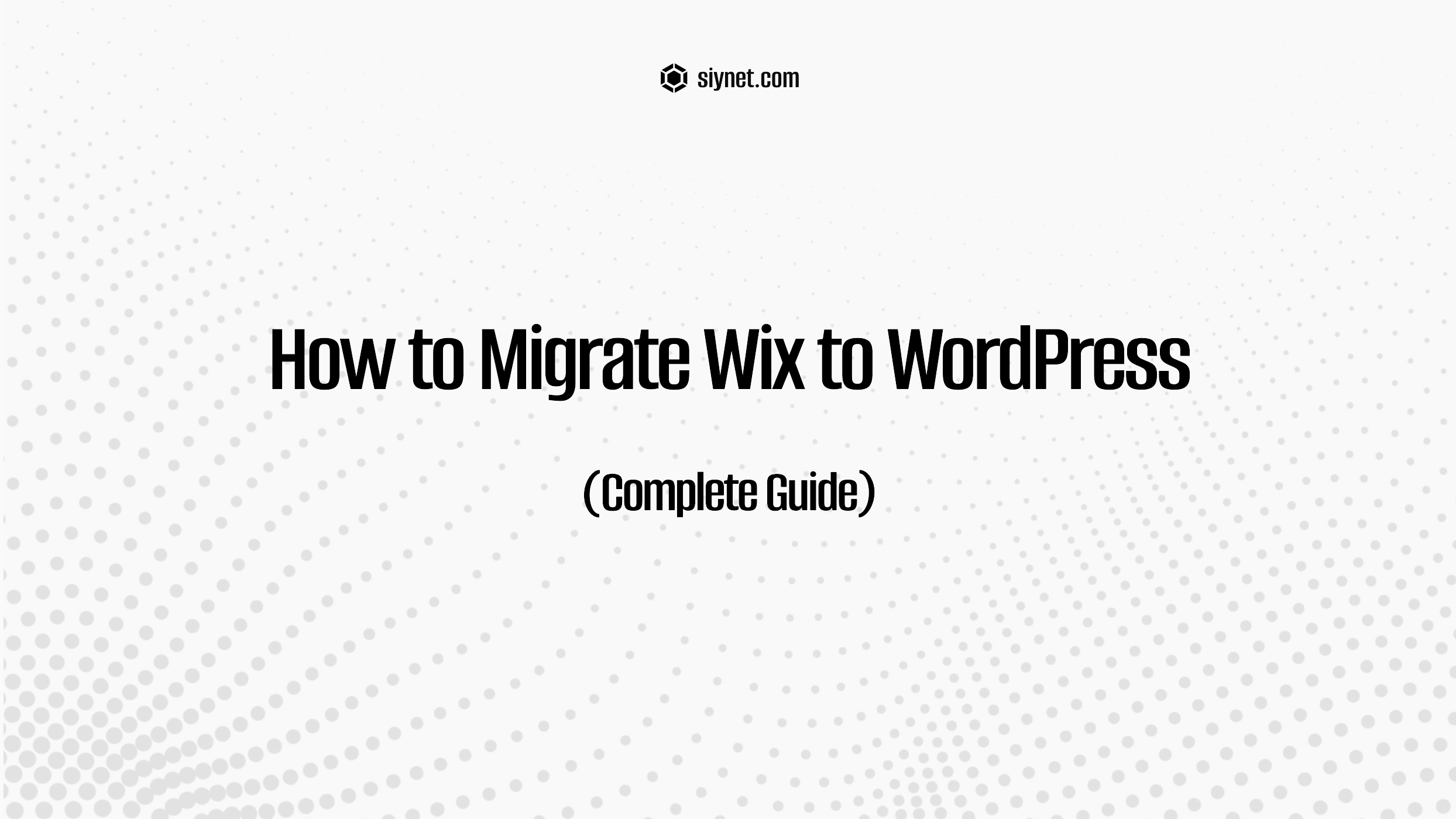
Migrating from Wix to WordPress can seem like a daunting task, but with the right approach, you can successfully move your website’s content, design, and functionality. This guide breaks down the entire process into manageable steps.
1. Prepare Your WordPress Site
Before you start migrating, ensure you have a WordPress site set up. If you don’t have one yet, follow these steps:
- Choose a hosting provider: A WordPress-compatible host like Bluehost, SiteGround, or WPX Hosting is ideal.
- Install WordPress: Many hosts offer a one-click WordPress installation feature.
- Select a theme: Choose a theme that closely matches the design you had on Wix, or a fresh theme that you want to start with.
2. Back Up Your Wix Site
Before migrating, it’s essential to back up all your Wix content. Wix doesn’t offer an official export feature for full website content, but you can:
- Save images and videos: Download all your media files from Wix.
- Copy text and blog posts: Manually copy text or use third-party tools to scrape your site’s content. Some users find tools like HTTrack or Scrapy useful to scrape content from static pages.
For blogs, you can manually copy and paste or use a tool like RSS feed to export blog posts (though it’s not as seamless as WordPress imports).
3. Migrate Your Domain
If you want to keep your domain name (e.g., www.yoursite.com), you’ll need to point it to your new WordPress host. Follow these steps:
- Unlock your domain: In Wix, go to Domains > Manage Domains and unlock your domain for transfer.
- Get the EPP code: Request the transfer code (also called an EPP code) from Wix.
- Transfer your domain: Move your domain to your new host. Many WordPress hosts, like Bluehost or SiteGround, offer a domain transfer service.
If you’re not transferring your domain, update the DNS settings from Wix to point to your new hosting provider.
4. Move Your Content to WordPress
There are a few methods to migrate content from Wix to WordPress:
4.1. Manually Add Pages and Blog Posts
Since Wix doesn’t offer an automated export feature, you’ll need to copy the content manually:
- Text: Copy and paste your page content and blog posts from Wix into WordPress.
- Images and Videos: Upload your media to the WordPress Media Library by going to Media > Add New.
- Create New Pages: Go to Pages > Add New in WordPress to create a new page and paste the content.
4.2. Use a Third-Party Tool (RSS Feed)
For blog posts, you can try to export your Wix blog content via an RSS feed.
- Export Wix Blog RSS Feed:
- Go to your Wix site’s Blog Manager.
- Find the RSS feed option, usually located under Settings > RSS Feed.
- Import to WordPress:
- In WordPress, go to Tools > Import.
- Select RSS, then upload your Wix RSS feed. This will import the posts, but formatting might require some adjustments.
5. Recreate Your Site’s Design on WordPress
You’ll likely need to rebuild the look and feel of your Wix site, as direct migration of the design isn’t possible.
5.1. Choose a WordPress Theme
Select a WordPress theme that closely resembles your Wix design. You can find free themes in the WordPress theme directory or purchase premium themes from sites like ThemeForest or Elegant Themes.
5.2. Customize Your Theme
Once you’ve chosen a theme, use the WordPress Customizer or a page builder like Elementor or WPBakery to recreate your site’s design.
- Page Builders: These tools allow you to drag and drop elements, which is ideal for recreating a design without needing to code.
- Widgets and Plugins: Install plugins like WPForms for forms, Yoast SEO for SEO, and WooCommerce for eCommerce.
6. Migrate Your Wix Blog (If Applicable)
If you have a blog on your Wix site, migrate it manually by copying and pasting the content into WordPress.
Alternatively, consider using tools like RSS Feed Importer or WordPress Importer plugins, though you may still need to adjust the formatting afterward.
7. Set Up Redirects (Preserve SEO)
To preserve your SEO rankings and avoid broken links after the migration, set up 301 redirects for your old Wix URLs to the new WordPress URLs.
- On Wix: Use the Wix redirect tool under Settings > SEO.
- On WordPress: Use a plugin like Redirection to manage your redirects.
8. Test Your New WordPress Site
Once everything is set up, test your new WordPress site thoroughly:
- Check for broken links.
- Verify mobile responsiveness.
- Test functionality like forms, buttons, and other interactive elements.
- Check for SEO: Install an SEO plugin like Yoast SEO and recheck your metadata.
9. Go Live
Once you’ve tested everything and ensured that the migration is successful, you can go live with your new WordPress site. Make sure your DNS is updated (if you’re using a custom domain) and that your hosting account is fully configured.
10. Keep Monitoring and Optimizing
After the migration, keep an eye on your site’s performance. Use tools like Google Analytics and Google Search Console to monitor traffic and performance. Regularly update WordPress and plugins to ensure your site remains secure.
Conclusion
Migrating from Wix to WordPress requires careful planning, especially since Wix doesn’t offer a direct export option for full-site migration. However, with these steps, you can successfully move your content, domain, and design to WordPress. Whether you choose a manual approach, use third-party tools, or rely on plugins, the result will be a more flexible, customizable WordPress site with greater control over your content and design.


Leave a Reply